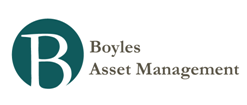Bill Gross – December 2011 Investment Outlook: Family Feud
Proposals from the German/French axis in the last few days have heartened risk markets under the assumption that fiscal union anchored by a smaller number of less debt-laden core countries will finally allow the ECB to cap yields in Italy and Spain and encourage private investors to once again reengage Euroland bond markets. To do so, the ECB would have to affirm its intent via language or stepped up daily purchases of peripheral debt on the order of five billion Euros or more. The next few days or weeks will shed more light on the possibility, but bondholders have imposed a “no trust zone” on policymaker flyovers recently. Any plan that involves an “all-in” commitment from the ECB will require a strong hand indeed.
On the fiscal side the EU’s solution has been to “clean up your act,” throw out the scoundrels and scofflaws (eight governments have fallen) and balance your budgets. Such a process, however, almost necessarily involves several years of recessionary growth and deflationary wage pressures on labor markets in the offending countries. While the freshly proposed 20-30% insurance scheme of the European Financial Stability Facility (EFSF) offers hope for the refunding of maturing debt, it is the deflationary, growth-stifling, labor/wage destroying aspect of the EU’s original currency construction that threatens a positive outcome over the long term. Without an ability to devalue their currency vs. global competitors or even – “Gott im Himmel” – Germany itself, peripheral countries may have survival to look forward to, but little else. Perhaps the Italians and Spaniards will put up with it, but maybe they won’t. The ultimate vote of the working men and women in these countries will always hang over the markets like a Damocles sword or perhaps a French/German guillotine. If the axe falls, then bond defaults may follow no matter what current policies may promise in the short term.
…..
Euroland’s problems are global and secular in nature, reflecting worldwide delevering and growth dynamics that began in 2008. It will be years before Euroland, the United States, Japan and developed nations in total can constructively escape from their straitjacket of high debt and low growth. If so, then global growth will remain stunted, interest rates artificially low and the investor class continually disenchanted with returns that fail to match expectations. If you can get long-term returns of 5% from either stocks or bonds, you should consider yourself or your portfolio in the upper echelon of competitors.
To approach those numbers, risk assets in developing as opposed to developed economies should be emphasized. Consider Brazil with its agricultural breadbasket and its oil. Consider Asia with its underdeveloped consumer sector but be mindful of credit bubbles. In bond market space, the favorite strategy will be to locate the cleanest dirty shirts – the United States, Canada, United Kingdom and Australia at the moment – and focus on a consistent, “extended period of time” policy rate that allows two- to ten-year maturities to roll down a near perpetually steep yield curve to produce capital gains and total returns which exceed stingy, financially repressive coupons. A 1% five-year Treasury yield, for instance, produces a 2% return when held for 12 months under such conditions. Bond investors should also consider high as opposed to lower quality corporates as economic growth slows in 2012.
- Hoisington Q2 2013 Letter
The secular low in bond yields has yet to be recorded. This assessment for a continuing pattern of lower yields in the quarters ahead is clearly a minority view, as the recent selling of all types of bond products attest. The rise in long term yields...
- Bill Gross – June 2012 Investment Outlook: Wall Street Food Chain
Soaring debt/GDP ratios in previously sacrosanct AAA countries have made low cost funding increasingly a function of central banks as opposed to private market investors. Both the lower quality and lower yields of such previously sacrosanct debt represent...
- Should Value Investors Care About The Debt Crisis? - By Zeke Ashton
The 2011 debt crisis is largely about whether or not the largest and most credit-worthy nations have the balance sheets, the willingness, or the credibility to bail out the smaller and less credit worthy nations. Given that the governments of even the...
- Take Flight From Europe’s Policy Food Fight – By Bill Gross
What has become obvious in the last few years is that debt-driven growth is a flawed business model when financial markets no longer have an appetite for it. In addition to initial conditions of debt to gross domestic product and related metrics, the...
- Bill Gross – November 2011 Investment Outlook: Pennies From Heaven
Halting the downward maelstrom is what current monetary policy is attempting to accomplish. With fiscal policy in most developed countries incredibly restrictive instead of stimulative, central banks have assumed the helm on their own – but it has been...

